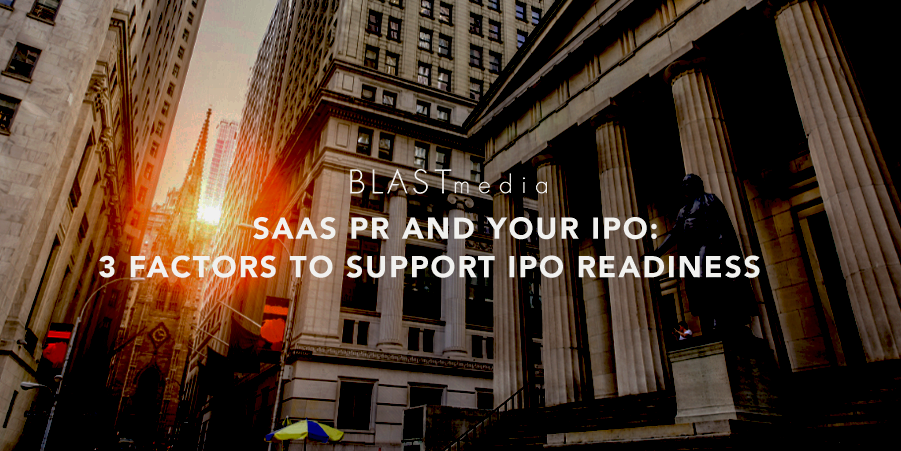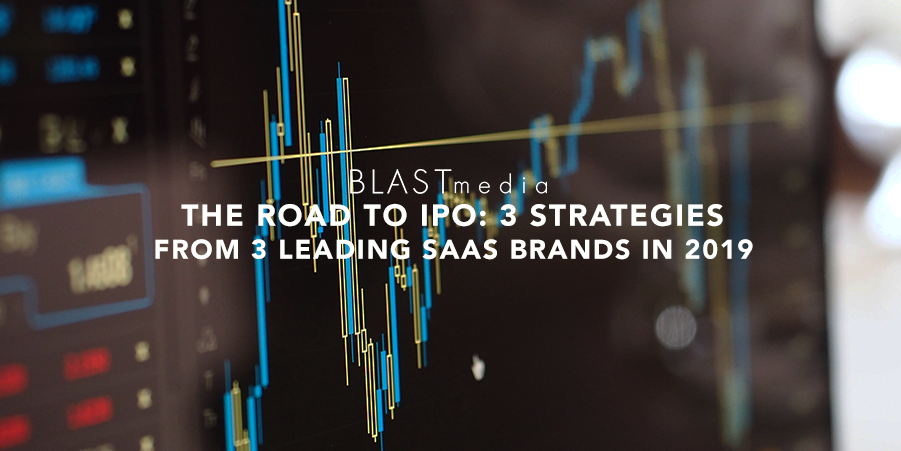A successful initial public offering (IPO) involves planning and effort. For SaaS marketing and PR professionals, that planning starts long before the pre-marketing phase initiated by investment banks. Keep in mind, leveraging PR to support a desirable financial exit isn’t just about having an IPO communications strategy. Public relations can support the factors that contribute to the perception of IPO readiness, including:
- Category creation
- Brand awareness
- Positioning
And we’re not the only ones who think so. Marketing leaders with experience scaling companies like Datadog and Snowflake from early stages through IPO recently explored these factors — and how they relate to IPO readiness — in a discussion moderated by ICONIQ Growth general partner Doug Pepper.
“The journey to an IPO is as unique as the company embarking upon it,” said Doug in a recap of the session written with ICONIQ Growth’s Brad Delaplane. “But no matter the path, every organization must ensure that investors are receptive to the company’s story. Through category creation, positioning, and brand awareness, the marketing function plays a vital role in how a company’s public readiness is perceived by the market.”
As a SaaS PR agency working with companies at all growth stages — from startup to publicly traded — we’ve seen time and again how PR can impact category creation, brand awareness and positioning for any SaaS company, not just those looking to IPO.
So, if you’re a marketing or communications professional working for an organization eyeing an IPO, or just someone looking to influence a target audience, here’s a look at three factors that play into perception — and how PR impacts each.
Category Creation
There are several ways to leverage PR when creating a new brand category. We often advise clients looking to establish a new category to consider a combination of thought leadership and product-based announcements.
While product-based announcements — and the traditional assets like press releases that go with them — might seem obvious, pairing these announcements with thought leadership develops a regular cadence of media coverage. It also provides a vehicle for the company to introduce important keyword phrases and tell a larger story about industry needs.
When it comes to category creation, successful thought leadership campaigns include consistent messaging and bold statements. Saying something bold sets thought leaders apart from other spokespeople by offering something new to the media, which, in turn, helps to secure media coverage.
As BLASTmedia PR Director Kate Johnson shared in a recent article about PR for category creation, “‘It’s time to abandon business intelligence tools.’ [is] a pretty bold statement to make, especially when you’re technically calling out major BI brands.” But it was the kind of comment BLASTmedia client Logi Analytics needed to land an article in Extra Crunch and continue building the story around its new brand category of embedded analytics.
Kate goes on to point out how brands can leverage company news or data, in addition to bold statements to support category creation efforts.
“Analysts often provide a sense of third-party validation when creating a new brand category because they offer insight and data points from other industry players. Pushing relevant company news or owned data as a PR campaign alongside thought leadership is another way to build credibility.”
PR efforts to support category creation don’t just impact perception; they can also help with the IPO process later on. As the team at ICONIQ explains, “if the company establishes itself in a distinct category many years in advance of the IPO, then the process of writing the S-1 will be much more fluid.”
Brand Awareness
When our team asks new clients for PR goals, they usually start with “increasing brand awareness.” And while PR isn’t the only way to generate brand awareness, it is often one of the most cost-effective. PR, and the media coverage generated as a result of PR efforts, provides third-party validation, while also allowing the brand to retain a level of control over messaging (more on that in a bit). Some even argue that more earned media mentions signal more brand awareness.
Generating brand awareness involves getting your brand in front of the right people. For B2B SaaS brands, that audience often includes one — or more — of the four pillars of B2B SaaS PR: investors, employees, partners and customers. One of the best ways to get your brand in front of these audiences is through media coverage.
Brand awareness can be challenging to quantify, so consider this example of the relationship between media coverage and brand awareness: BLASTmedia supported Veritone (NASDAQ: VERI) during a product launch. PR efforts around the launch resulted in more than 20 media briefings and 15 articles in business and technology outlets — including two pieces in Barron’s. The initial article in Barron’s was credited with a boost in the company’s stock price which traded $3.29 higher the Monday after the piece ran.
Positioning
Unlike brand awareness, positioning considers what the customer thinks about a brand and how the brand is distinguished from competitor offerings in the minds of a target audience.
As with other factors playing into the perception of IPO readiness, thought leadership is also helpful for positioning. A SaaS company looking to influence how its target audience sees the brand could seek out opportunities to comment on industry events, contribute a quote about an industry trend, or draft and submit an article educating others in the industry. These all are examples of thought leadership.
Other media relations efforts also contribute to positioning, especially those leveraging the media and other industry influencers to build credibility. For example, customer stories — like a recent story about our client Phenom and customer Southwest Airlines placed in The Wall Street Journal — provides third-party validation of Phenom from both the media outlet and the customer.
PR is an effective and important way to support category creation, brand awareness and positioning for any SaaS company — including those not yet preparing for an IPO. For those looking to ensure that investors are receptive to the company’s story, PR isn’t just effective in developing the perception of IPO readiness; it’s vital.
Looking for more? You might also like:



